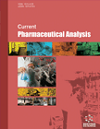
Full text loading...
We use cookies to track usage and preferences.I Understand
Alzheimer's disease (AD) impacts a total of 30 million individuals worldwide, resulting in the impairment of brain cells. Despite the approval of medications, there are still poor results and adverse effects that continue to exist, which has led to continued research for more effective treatments.
In this study prioritize the medicinal plants and their bioactive chemicals to attract researchers and pharmaceutical companies interested in producing powerful herbal medicines and semi-synthetic drugs for the treatment of Alzheimer's disease, although minimizing any potential adverse effects.
This review investigate the effective use of medicinal plants and their phytochemicals in the treatment of AD to manage its growth and relieve symptoms via improving cognitive deficits.
These medicinal plants and their phytochemicals contribute to the treatment of AD by protecting against cell damage induced by beta amyloid, improving memory and learning abilities, functioning as nerve tonics, and exhibiting strong antioxidant and anti-inflammatory activities. Furthermore, they have demonstrated therapeutic benefits in the management of AD. The finding suggests that several phytoconstituents/ plant metabolites are present in numerous anti-Alzheimer's plants known for their anti-Alzheimer's properties such as rosmarinic acid, quercetin, kaempferol, gallic acid, β-sitosterol, oleic acid and linalool. In addition, this article emphasizes the anti-Alzheimer's disease significance of various important phytochemicals.
The review proposes that medicinal plants and their bioactive phytochemicals hold potential as a viable alternative treatment for AD. The utilization of these medicinal plants can improve memory and decrease the likelihood of developing Alzheimer's disease in the future.

Article metrics loading...

Full text loading...
References


Data & Media loading...

